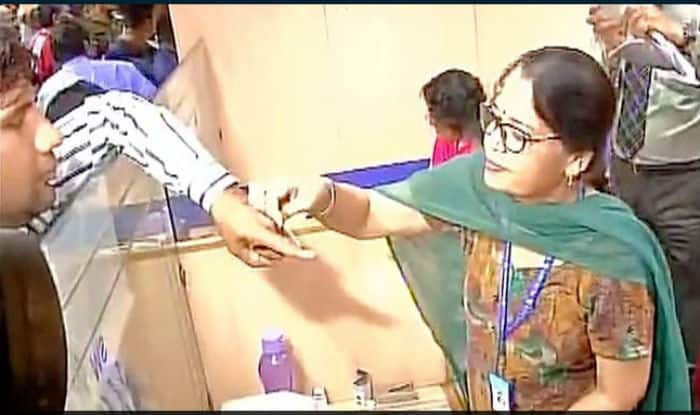
By clicking “Accept All Cookies”, you agree to the storing of cookies on your device to enhance site navigation, analyze site usage, and assist in our marketing efforts Cookies Policy.

New Delhi, Nov 17: Following the decision to use indelible ink on the customer’s right index finger to ensure one time transaction of currency notes of denomination 500 and 1000, shortage of the recommended indelible ink has been reported. The State Bank of India’s headquarters in Tamil Nadu has instructed its branches to use ‘dhobi ink’, a special kind of ink used by washermen to mark clothes, to mark index fingers of customers.
The move to use indelible ink was introduced on Wednesday to ensure that the same people do not exchange old currency notes multiple times. According to an Indian Express report, 11 branches of SBI and branches of other banks like Bank of India, Canara Bank and the Reserve Bank of India’s Delhi office started using the ink on fingers of people exchanging old currency.
Indelible ink, which is used in polls to mark voters, is a special kind of ink which is not easily removable and stays for a minimum of 30 days. In India Mysore paints and Varnish ltd (MPVL), run by the Karnataka Government is the only registered producer of indelible ink. According to MPVL, it has received the order of 2.9 lakh 5 ml bottles of the ink, and the total cost of Rs 3.45 crore will be borne by the banks. While production of the lot is underway, whatever amount of indelible ink was available with the Election commission and other authorities have been dispatched to banks through the Reserve Bank of India.
There seems to be a shortage of indelible ink and hence the banks are now resorting to alternative means. One such mean is ‘dhobi ink’. Though there is no official statement regarding the using of ‘dhobi ink’ in place of indelible ink, reportedly the message was conveyed to branch heads by the bank’s Chennai headquarters during a video conference on Wednesday.
Some of the bank employee has raised concern as to how ‘dhobi ink’ might react on human skin, since the dye produced by MPVL is chemically tested and is specialised for human skin unlike ‘dhobi ink’.
Th rule was implemented after same persons exchanged old currencies multiple times. There were instances when notes were exchanged either by going to various branches of the banks or using different identity proof every time. Hence, in such a situation, the use of indelible ink seems reasonable.
The process involves marking the right index finger of the customers who are either exchanging old notes or depositing them at the banks. The reason for choosing the right index is to avoid confusion during the arriving elections, where the left finger is marked with the same indelible ink.
The demonetisation drive which according to the government is introduced to check black money and fake currency in the economy. The Narendra Modi government scrapped Rs 500 and Rs 1,000 notes and introduced new Rs 500 and Rs 2000 currency notes. While this move has been critiqued by the Opposition greatly, the drive is undergoing, with new cap on withdrawals being introduced and reviewed.
For breaking news and live news updates, like us on Facebook or follow us on Twitter and Instagram. Read more on Latest India News on India.com.